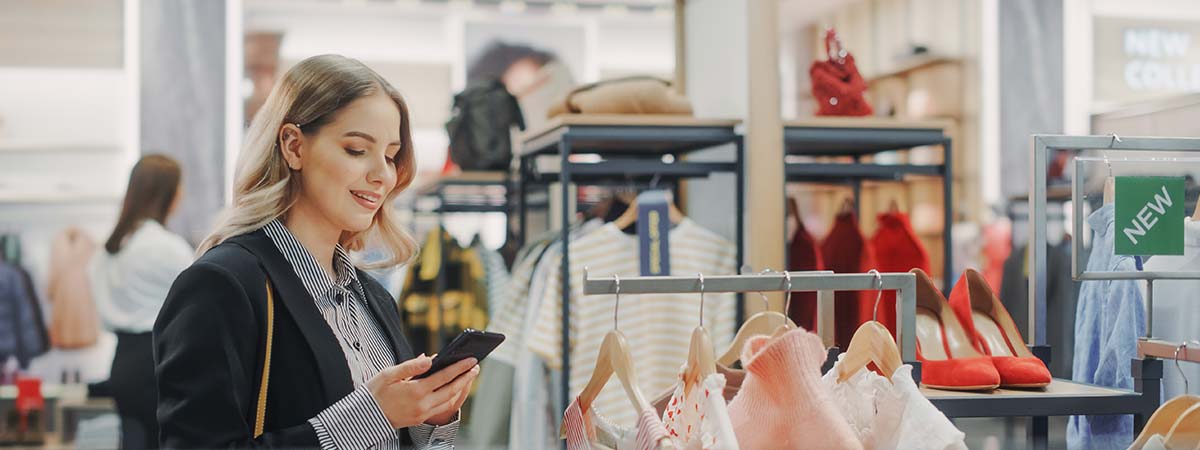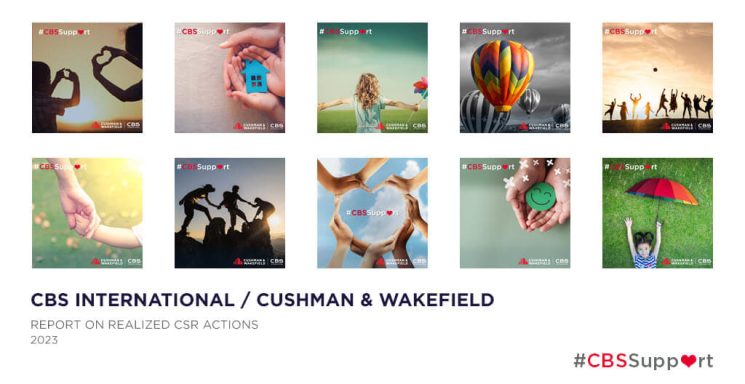
What is the future of shopping?
Malls and brick-and-mortar stores are expected to remain the foundation of the retail sector, but how are they evolving?
After the impact that the pandemic had on the retail market as a whole, new interesting trends appeared in the shopping itself, but also in the development of shopping centers. Malls and brick-and-mortar stores are expected to remain the foundation of the retail sector, but how are they evolving? The latest studies show that the Customer Experience (CX), not the product itself, is the main differentiator when buying and choosing a certain brand. With 86% of shoppers willing to pay more for a better CX according to the Pew Research Center, there’s a lot to gain by improving the customer experience.
Omnichannel tools create more meaningful shopping experiences
With recent changes in the lifestyle, it is clear that there have also been changes in the way we shop. From buying in the traditional stores only to the significant participation of online shopping during the pandemic it has become clear that an enjoyable shopping experience requires more choice. For this reason, customers prefer to have multiple channels to interact with their favourite brands, thus the omnichannel approach to sales is becoming the key trend for the forthcoming period.
One smart way to get customers to your door is to offer them a customer-friendly services such as “buy online, pick up in store” (BOPIS). In a way, this strategy is the best of both worlds, as it gives customers the convenience of online shopping with the option to pick up their products faster, without the extra shipping costs or time delay.
Nowadays, when customers shop, they use all channels, from traditional stores to websites and online shopping to social networks and mobile applications. The key is to give them an experience across all channels, and using three or more channels can increase sales by nearly 5 times. Retailers who invest in the omnichannel sales perform better because they appeal to all target customer groups. Almost three-quarters of customers prefer to buy through multiple channels, and 50% of all browse for the products online (on a website or social media) before making a targeted purchase in a traditional store.
An interactive customer experience mitigates the differences between online and offline stores
Today when traditional stores are striving to have more customers and at the same time compete with the attractiveness of online shopping, it is necessary to show creativity when it comes to the interior design of the stores as well as the ways in which they attract customers to their products. It is not just about the experience of going to the store in person, it is also about the experience customers have while in the store.
Retailers must foster an atmosphere of safety and comfort while providing a fun and enjoyable experience that appeals to all customers. From serving treats and drinks in the stores, to interactive or virtual dressing rooms and trying on items in the customized weather conditions, brands are providing multidimensional experiences to strengthen the brand loyalty.
Brand storytelling
Brand storytelling is increasingly important, given that shopping has become more than just browsing items and purchasing a selected product. One of the key trends has become the usage of the brand story to portray the values of the brand and the company, in order to retain existing and attract new customers.
A brand story combines the facts and emotions that the brand evokes in people. In addition to giving customers reasons why they should buy a particular product or service, companies often share the value story behind the brand – why it exists and why it matters. In this way, they stand out from the competition, in order to build a strong base of loyal clients and achieve influence in the environment in which they do business.
Companies must be aware of the reduced Attention Span of the modern human from 12 to 8.25 seconds. That’s why they should experiment with telling their story in different ways and through different platforms, such as videos, social media stories, podcasts, blog posts, and even merchandise like t-shirts and mugs.
When designing the interior of the retail space, the first step in that process the values and demographics of the target group. Identifying that group, as well as choosing design elements that appeal to them, is both a creative and strategic way to attract customers to the store.
Transformation of malls from places for shopping to places for entertainment and shopping
Modern shopping centers today offer numerous amenities that attract customers, retain them and influence their return. Many studies have shown that it is six to seven times more difficult to acquire a new loyal customer than to keep an existing one, and according to research by Bain & Company, an increase in the Customer Retention Rate by only 5% can increase the revenue by 25 – 95%.
Shopping centers should have a wide selection of stores, to offer a unique experience to their visitors, including whole families. The best malls have very similar characteristics. These are: location, design, mix of brands, advanced facilities and places for recreation and entertainment.
Primary location – the location is the most important to attract customers. The best shopping malls are situated at the extremely convenient location for the customers, as they are accessible from any part of the city, both by car and public transportation. It is of great importance that the shopping center has a large parking space and that it is in the immediate vicinity of a public bus/train stops.
Custom Design – A mall is more than just a collection of stores. It’s an experience, and the way a mall is designed can go a long way in making sure visitors have an unforgettable experience. The look and feel must satisfy the preferences of the target group. If people are looking for high-end brands, they also expect a luxury design, but on the other hand, if the goal is to provide a more affordable shopping with a limited time, you should think about simplifying the design and architectural solution that allows quick shopping and easy commuting.
Entertainment and Recreation Facilities – Today’s modern malls are much more than a place to shop. In the past, the offer was a cinema, a game room, a bowling alley, and today malls are often all-inclusive entertainment complexes, which contain everything from karaoke bars, skate parks and ice rinks to museums and aquariums. The goal is to offer something for everyone – family-friendly entertainment, but also attractive nightlife. Looking at the malls worldwide, they offer amenities such as state-of-the-art spas, as well as indoor amusement parks, ice rinks, ziplines, mini-golf, movie theatres, bowling alleys, climbing walls, aquariums, galleries, concert halls, event and karaoke centers, gyms and other benefits.
Improved Customer Experience – Satisfied customers keep coming back, and a positive shopping experience, not only in the store but also in the mall, is the key to the success and long-term sustainability of the project. It is possible to buy the same brand in several places, so it is important to focus on improving the experience in the shopping centre itself, and majority of Mall Managers believe that this helps to build loyalty.
Improving the customer experience is the key to long-term success, and customers are more likely to make repeat purchases if they enjoy the brand as well as the time spent in a certain mall. For this reason, an incentive is necessary to attract customers to spend their free time in the mall. Consumers want more than places to eat and shop — they want experiences.
In addition to the mentioned additional facilities, the vacant/unused space of the shopping center can serve as an event venue. This allows to organize events, concerts and promotions, invite groups and non-profit organizations to hold events throughout the year and increase the number of visitors to the mall. One of the advantages are also Wi-Fi cafeterias or “Hot spots” places that can be a quiet haven for the people working remotely. An option is to offer a selection of snacks and drinks while they check their email or reply to messages.
By collecting data on the footfall in the shopping center: the number of people at the entrances, the occupancy of the garage, the entrances to certain areas, by performing various customer surveys and the like, will help the shopping center management to have an idea of the impressions of the customers, as well as the areas that need improvement.
These trends are already present in most developed markets, and the question remains when customers in Serbia will also be able to enjoy all the novelties and trends.








